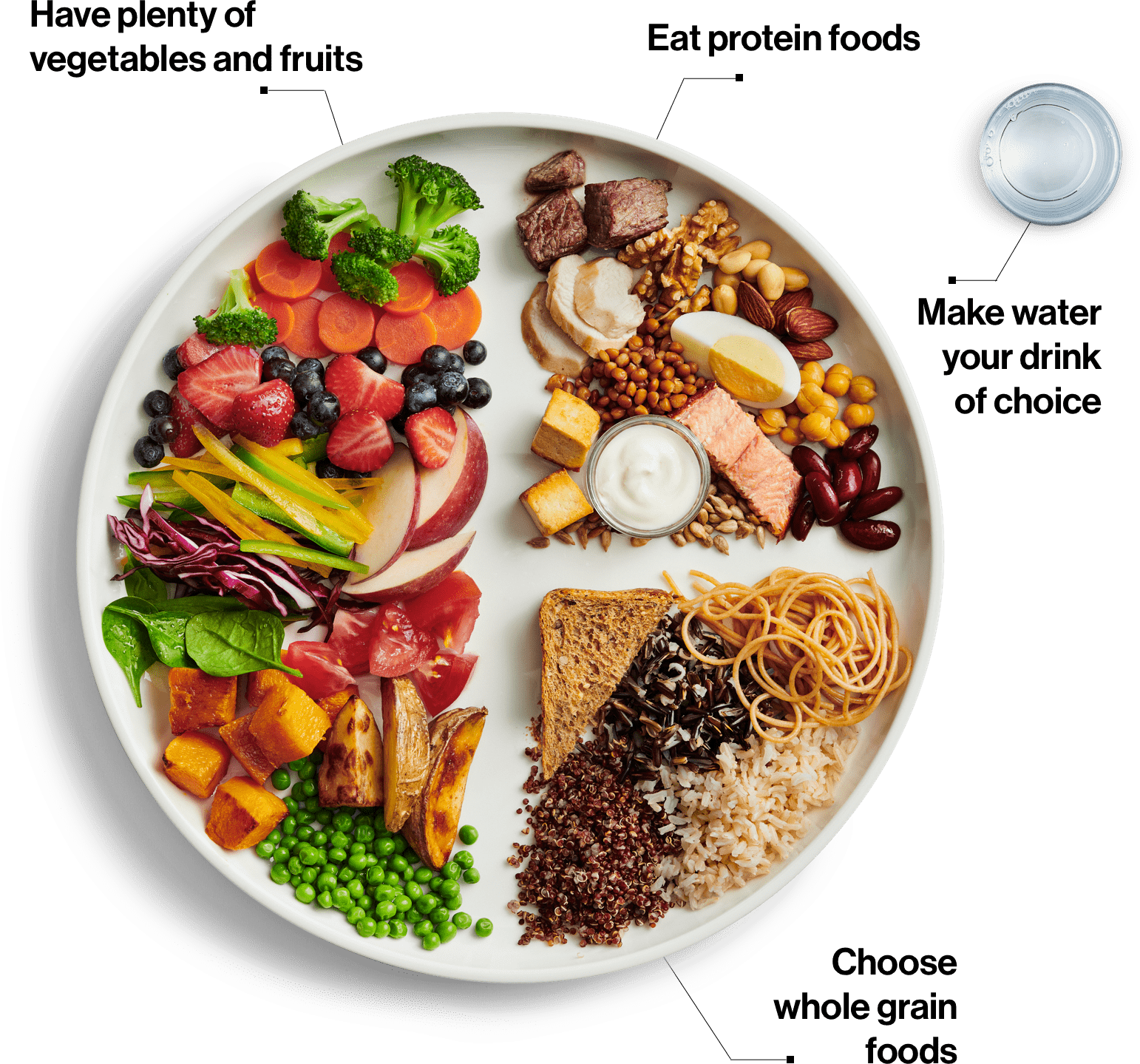
OTTAWA — The Canada Food Guide’s familiar food rainbow has been replaced with an interactive plate of guidelines promoting healthier lifestyles and updated food suggestions — changes being widely applauded by health and food science experts.
Gone are food groups and portion sizes of yesteryear. Now, Health Canada’s food guide takes a broader approach to promoting healthier behaviours and choices, including a new focus on promoting more plant-based protein, drinking more water and cooking at home.
Updated recommendations also list foods that should be limited, such as processed and prepared foods that are high in sugar, salt and saturated fat, as well as alcohol.
“Dietary risks are one of the top three leading risk factors for chronic disease burden in Canada, however nutrition science is complex and often results in conflicting messages. This is why Canadians need credible healthy-eating information to guide their food choices,” said Hasan Hutchinson, director-general of nutritional policy and promotion at Health Canada.
But while dietitians and health organizations lined up to praise this new approach, industry organizations that represent dairy and beef producers say they worry Canadians might see the new guide as a suggestion to limit their intake of red meat, cheese and milk.
In eliminating specific food groups and portion suggestions, the guide no longer lists milk and dairy products as a distinct food group. Hutchinson said the intent was not to eliminate dairy from the guide and pointed to examples where low-fat, low-sodium and unsweetened dairy products are listed within protein and unsweetened beverage suggestions.
But a nutritionist with the national policy and lobby organization representing Canada’s dairy farmers said she is concerned that dairy products are now lumped in with all other proteins.
“I have a concern with that because not all protein foods have the same nutritional profiles. They provide, in addition to protein, they provide nutrients and in the case of milk products these nutrients are very different than other protein sources,” said Isabelle Neiderer, director of nutrition and research for the Dairy Farmers of Canada.
Joyce Parslow, executive director of marketing and consumer relations for Canada Beef, echoed these concerns, adding that she’s happy the new guide didn’t discourage Canadians from eating red meat.
“We’re pleased that red meat is still certainly still part of the mix … but we do want to ensure that consumers don’t start to think that you need to be swapping out a powerful protein like red meat and replace it with plant-based proteins. The two are really better together.”
Early drafts of the guide indicating it would promote eating more plant-based protein had sparked concern among dairy and beef farmers.
Heavy lobbying from well-funded food industry groups with these same concerns created controversy during the last overhaul of the Canada food guide 12 years ago. That’s why Health Canada specifically excluded meetings with industry this time.
Only high-quality, peer-reviewed scientific reports on food health and advice from respected authorities were used, Hutchinson said.
“We really needed to keep that distance for any perceived or real conflict of interest,” he said. “We felt very strongly about that because in the 2007 Food Guide there was a fair amount of criticism about the influence of industry and we think, to make sure we keep the confidence of Canadians and health professionals and other stakeholders, it was necessary to stay quite strict on that.”
However, the lengthy overhaul process did include public consultations, and some industry groups did provide submissions through that avenue, including the Dairy Farmers of Canada and Canada Beef.
In addition, no fewer than 46 lobbyists registered to lobby government on the food guide and had dozens of meetings with representatives of at least 23 government departments, offices or agencies over the last year and also met with at least 43 MPs, senators or their senior staffers.
Nonetheless, the Canadian Medical Association, the Heart and Stroke Association and the Dietitians of Canada all say the final result does reflect the most trusted research in the field and they applauded the attempts to minimize industry input while also taking a broader focus on healthy eating as a lifestyle.
“What is striking about the new Canada’s Food Guide is the shift to a broader approach — talking not only about what Canadians should eat, but also how they should eat,” said Nathalie Savoie of the Dietitians of Canada.
Animal-rights groups also expressed support for the new guide with its push toward more plant-based proteins over foods from fish and animals.
The document released Tuesday is only part of Health Canada’s new healthy-eating recommendations. A report directed at health professionals and policy-makers will be released later this year, which will include more details on amounts and types of foods for hospitals, schools and seniors’ facilities to us to create menus or diets in clinical or institutional settings.